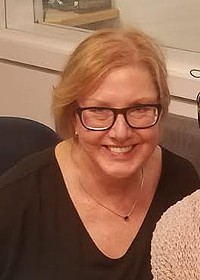News | Fight the Power: University neighborhood is a pipsqueak in battle against a monster substation.
By Katharine Biele @kathybieleIn this case, the real estate broker and Salt Lake City planning commissioner at a recent meeting of the planning commission was actually asking for photos, maps and graphic presentations. And she wanted to see Mayor Ralph Becker, too.
nThat’s because—based on the debate over expanding a University area power substation—the whole issue of electrical needs, peak loads and predictions has created a little kilowatt crisis with the potential of spreading the pain throughout Salt Lake City and to its suburbs.
nLet’s face it. We’re not talking about Reddy Kilowatt and his happy cartoon dances anymore. The nation’s energy questions are arcane at best, requiring higher math and physics homework from even small neighborhoods in the path of so-called progress.
nRocky Mountain Power says it’s urgent. No time to stop and think, or plan. Or rather, the planning has already been done—without you.
nSo when members of the University Neighborhood Organization heard last year about plans for 138K-volt power lines cresting down 800 South and through their back yards, they started getting a little worried. It turns out the project is more than power lines.
nIn November 2008, area residents learned Rocky Mountain Power (RMP) planned to expand and update a small substation on the corner of 1100 East and 100 South.
nRMP is in the unenviable position of serving the city’s growing needs amid protestations of the larger issue. Neighbors say it makes little sense to increase energy capacity when the city is pushing conservation, health and safety—all of which they worry about with a huge substation. Besides, it’s ugly.
nSince early January, RMP has been hosting information sessions and answering questions for the planning commission. Over and over again, company spokeswoman Alene Bentley repeats that RMP expects a 2 percent increase in city customers over the next five years. That means a 5 percent increase in energy consumption. During peak demand periods that could mean a need for 22 percent more power, and RMP does not have that kind of capacity.
nRMP says it needs to “reconductor” the lines—give them a solid ceramic core—and add a transformer to the tiny substation—just in case the lines need to carry a lot more voltage. Of course, the just-in-case scenario isn’t gaining traction in a neighborhood that has already seen some of the 1923 substation demolished and pole after pole pop up along the streets.
nDonna Chin and her husband, Doug Harding, live next door to the substation. They were so concerned that they rented a special meter to measure radiation in the area nearby. The news wasn’t good. Harding found constant emissions of radiation at five times the maximum level deemed acceptable by the Environmental Protection Agency. A block away, he says, it was the same story.
nHarding says RMP promised to do studies of the soil before any demolition, but took down the old substation without notice a few days after the Jan. 14 planning commission meeting.
nRMP officials acknowledge technology exists to bury lines, but it’s expensive and untenable. Meanwhile, the neighborhood has been scrambling to play catch-up in a confusing process.
nSalt Lake City Councilman Luke Garrott pleaded with the planning commission to stop RMP’s volcanic progress until the city could establish a 10-year Master Plan for power expansion.
nFrank Gray, director of the city’s Department of Community and Economic Development responded bluntly: “The city does not do any energy power planning,” he says. “That’s private utility planning.”
nRMP, in fact, has to file its 10-year plan with the state Public Service Commission—not the city. The planning commission, Gray says, is sitting as a quasi-judicial body evaluating the company’s request for a conditional use permit to upgrade the station.
nDe Lay is less than impressed with the make-it-up-as-you-go process. “We did not get the answers we needed,” she says. “It’s really fascinating that our mayor was just voted one of the 20 ‘green mayors’ in the country, he has a sustainability director with a staff, and they were not present nor did they have any documentation in the file.”
nVicki Bennett, the city sustainability director, says all she can do is work to reduce future demand. Maybe they’ll get more draconian with ordinances that require builders to install extra power “off the grid.” But that won’t help the University neighborhood. It will be too late for them.
More by Katharine Biele
-
Deseret News poll shows Donald Trump skating to another victory in Utah.
Hits & Misses
- Apr 17, 2024
-
LDS General Conference dominates local news while stories on diversity and discrimination take a back seat
Hits & Misses
- Apr 10, 2024
-
Utah's GOP Senate candidates try to out-MAGA each other in a race to the bottom.
Hits & Misses
- Apr 3, 2024
- More »
Latest in News
Readers also liked…
-
Raise a glass for E.L.T Harrison, architect of the Beerhive building on Main
Small Lake City
- Oct 11, 2023




